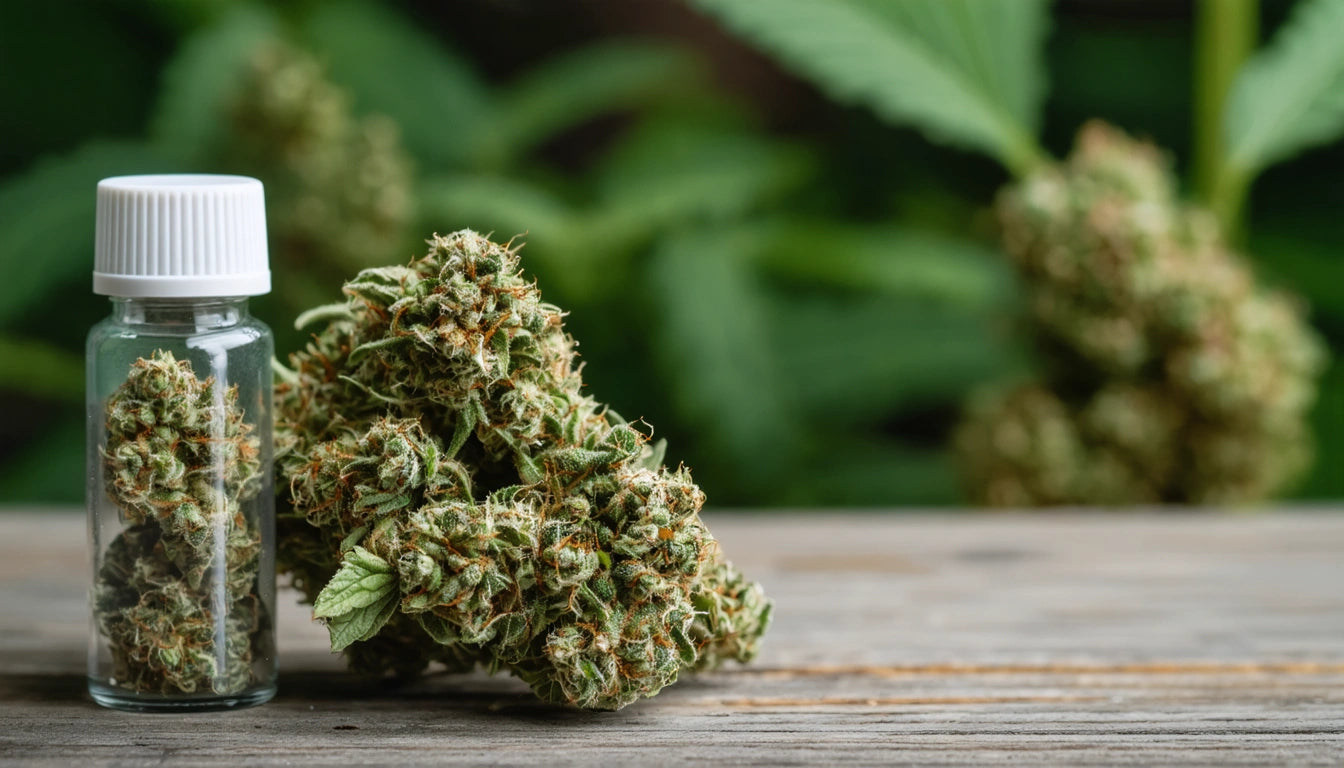Table of Contents
Understanding Weed Withdrawal: Symptoms and Effects
Cannabis withdrawal is a recognized condition that can occur when regular users significantly reduce or stop their consumption. Despite common misconceptions that marijuana is not physically addictive, research confirms that withdrawal symptoms from weed are real and can impact daily functioning. Understanding these symptoms is crucial for those considering cessation or supporting someone through the process.
Cannabis Withdrawal Syndrome: Overview
Cannabis Withdrawal Syndrome (CWS) is officially recognized in the Diagnostic and Statistical Manual of Mental Disorders (DSM-5). It typically occurs in individuals who have used cannabis heavily and regularly, often daily or near-daily, for an extended period. When these individuals abruptly reduce or stop their consumption, their bodies must adjust to functioning without the influence of cannabinoids.
Research indicates that approximately 47% of regular cannabis users experience withdrawal symptoms from weed when they stop using. The severity of these symptoms correlates with the frequency, duration, and amount of prior use.
Common Physical Withdrawal Symptoms
Physical manifestations of cannabis withdrawal can range from mild discomfort to more pronounced symptoms that interfere with daily activities.
Sleep Disturbances
Sleep disruption is among the most commonly reported symptoms of cannabis withdrawal. This can include:
- Insomnia or difficulty falling asleep
- Decreased sleep quality
- Vivid, unusual dreams or nightmares
- Changes in sleep patterns
Appetite and Digestive Changes
Cannabis affects appetite regulation, and its absence can lead to:
- Decreased appetite
- Nausea or stomach discomfort
- Weight loss during the withdrawal period
For those experiencing severe digestive issues, it's worth noting that while cannabis can sometimes cause or relieve nausea during use, withdrawal often brings temporary digestive disruption.
Physical Discomfort
Other physical marijuana withdrawal symptoms may include:
- Headaches
- Sweating and chills
- Tremors or shakiness
- Mild fever
Psychological and Emotional Effects
The psychological aspects of withdrawal can be particularly challenging for many individuals.
Mood Disturbances
Common mood-related symptoms of cannabis withdrawal include:
- Irritability and anger
- Anxiety or nervousness
- Depression or low mood
- Restlessness
Cognitive Effects
Users may also experience:
- Difficulty concentrating
- Brain fog or mental cloudiness
- Decreased ability to focus on tasks
- Memory issues during the withdrawal period
These cognitive effects are typically temporary and improve as the body adjusts to functioning without cannabis. Understanding the side effects of cannabis use can provide context for why these withdrawal symptoms occur.
Timeline of Marijuana Withdrawal
Knowing what to expect and when can help individuals prepare for and manage the withdrawal process.
First 24-72 Hours
Initial withdrawal symptoms from weed typically begin within the first 24 hours after the last use and may include:
- Irritability and mood changes
- Onset of cravings
- Beginning of sleep disturbances
Days 4-14
This period often represents the peak of withdrawal:
- Sleep disturbances may intensify
- Physical symptoms reach their height
- Mood fluctuations continue
- Cravings may be strongest
Weeks 2-4
Most acute physical symptoms of cannabis withdrawal begin to subside, though some psychological effects may persist:
- Sleep gradually normalizes
- Appetite returns
- Mood begins to stabilize
For a deeper understanding of this recovery timeline, this article explores how long it takes to feel normal after quitting weed.
Managing Withdrawal Symptoms
While withdrawal symptoms from weed can be uncomfortable, several strategies can help manage them effectively.
Lifestyle Approaches
- Regular exercise to reduce anxiety and improve sleep
- Hydration and balanced nutrition
- Establishing healthy sleep routines
- Stress reduction techniques like meditation
Support Systems
- Peer support groups
- Professional counseling or therapy
- Family and friend support networks
Having proper support systems in place is crucial, especially since cannabis withdrawal can sometimes overlap with other substance recovery processes. In some cases, cannabis has been investigated for its potential to assist with opiate withdrawal symptoms or alleviate symptoms of alcohol withdrawal, but its own withdrawal process requires dedicated management.
Special Considerations and Risk Factors
Certain factors can influence the severity of withdrawal symptoms from weed:
Pre-existing Conditions
- History of anxiety or mood disorders
- Previous substance use disorders
- Underlying medical conditions
Usage Patterns
- Duration of regular use (longer use typically means more pronounced withdrawal)
- Frequency and amount of consumption
- Potency of products used
Safety considerations extend beyond just the withdrawal process. For instance, proper storage of cannabis products in child-resistant packaging systems is essential to prevent accidental ingestion, particularly in households with children where cannabis products might be present during someone's withdrawal journey.
Long-Term Recovery and Support Resources
Recovery from cannabis dependence extends beyond the acute withdrawal phase. Many individuals benefit from ongoing support and resources as they adjust to life without cannabis.
Professional resources include:
- Substance Abuse and Mental Health Services Administration (SAMHSA) National Helpline: 1-800-662-HELP (4357)
- Marijuana Anonymous and similar 12-step programs
- Outpatient treatment programs specializing in cannabis use disorder
- Digital health applications designed to support recovery
Understanding that withdrawal symptoms from weed are legitimate physical and psychological responses helps validate the experiences of those going through cessation. With proper support, management strategies, and time, most individuals can successfully navigate the withdrawal process and establish new patterns of wellbeing without cannabis.











Leave a comment
All comments are moderated before being published.
This site is protected by hCaptcha and the hCaptcha Privacy Policy and Terms of Service apply.